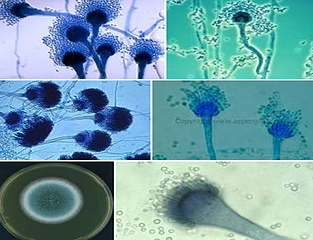Our first few blog posts will be dedicated to the exciting world of dust, why dust can be dangerous and the 'art' of containment. These are the basics, the foundation, of infection and dust control.
 Earlier this month I posted about the how dust becomes infected and why it can be dangerous when this happens. Clearly infected dust is a health hazard in healthcare facilities. Some of the other components of dust just have a high 'yuck" factor but all these elements are known as Bioaerosols. Here are some of the components (bioaerosols) in dust.
Earlier this month I posted about the how dust becomes infected and why it can be dangerous when this happens. Clearly infected dust is a health hazard in healthcare facilities. Some of the other components of dust just have a high 'yuck" factor but all these elements are known as Bioaerosols. Here are some of the components (bioaerosols) in dust.
- 1. Dead skin cells -- They make up less of the dust than you might think.
2. Live dust mites, dead dust mites and dried dust mite feces. ---- Yuck and double yuck.
3. Clothing fibers and lint
4. Streptococci, Diptheria, Turberculosis, other bacterium
5. Mold spores -- Aspergillus being the deadliest and most documented.
6. Pollen and plant particles
7. Lead particles
8. Flame retardants
9. Paint particles
10. Dead bugs parts -- More yuck.
11. Rodent feces - Big time yuck.
12. Asbestos and arsenic
13. Construction debris
14. Pesticide residue
15. And more...dust is a collection of all of these and many more elements.
Outside of allergens like pollen, dust mites, etc. most of these do not pose a major danger in your home if you are a healthy person. In a hospital setting however, bacteria and mold spores that infect other dust particles can be deadly for those patients who are immunocompromised (an impaired immune system cause by illness, disease and treatment) and cause hospital acquired infections.
In a hospital, this would include those receiving cancer treatments, HIV or Aids treatment, solid organ transplants, stem-cell transplantation, congential immune deficiency, chronic inflammatory conditions, neurological patients and others. For these patients dust containment as an infection control practice is critical to their well-being.
Our next post will discuss the basics of filtration, the HEPA standard and what it means.
